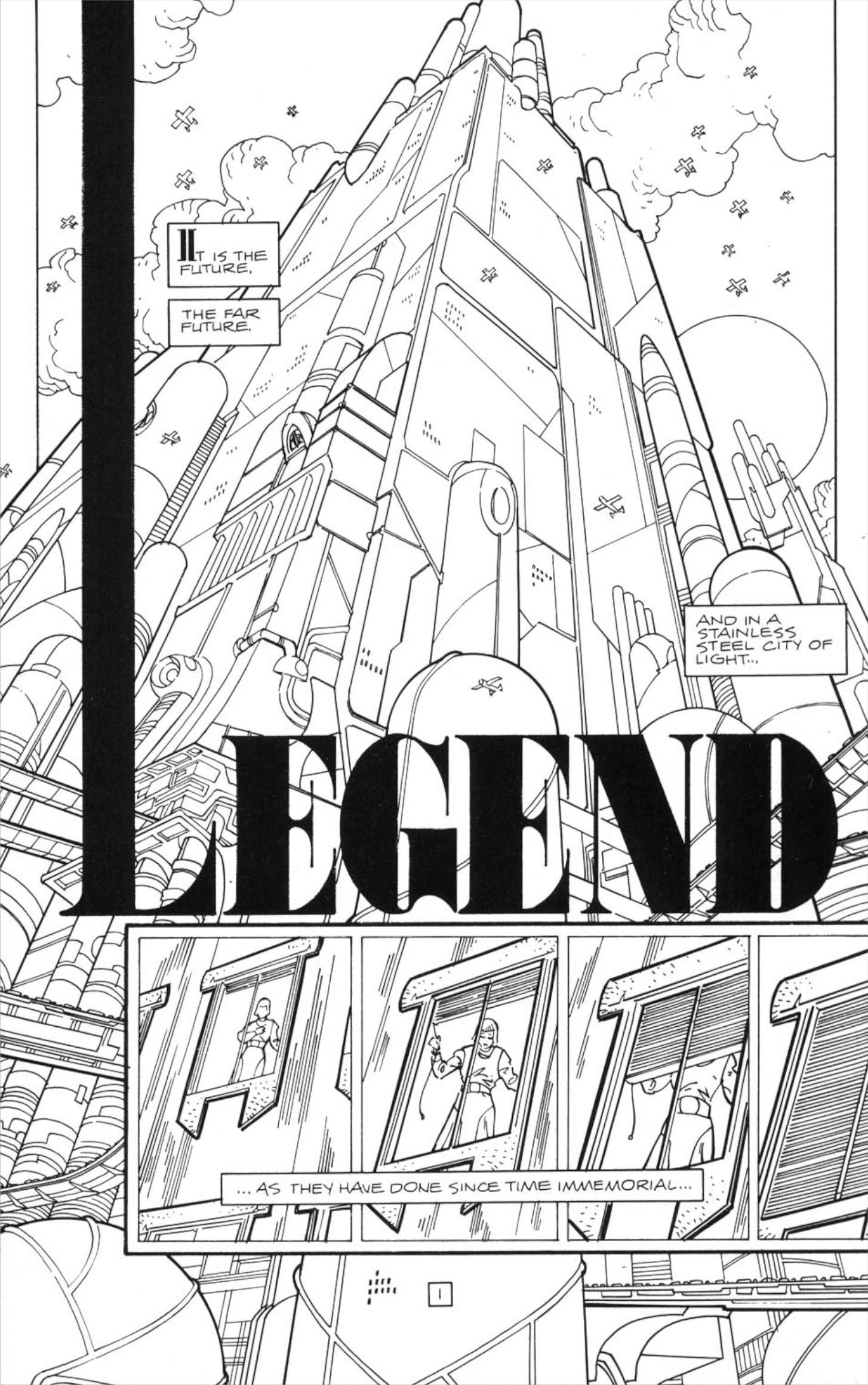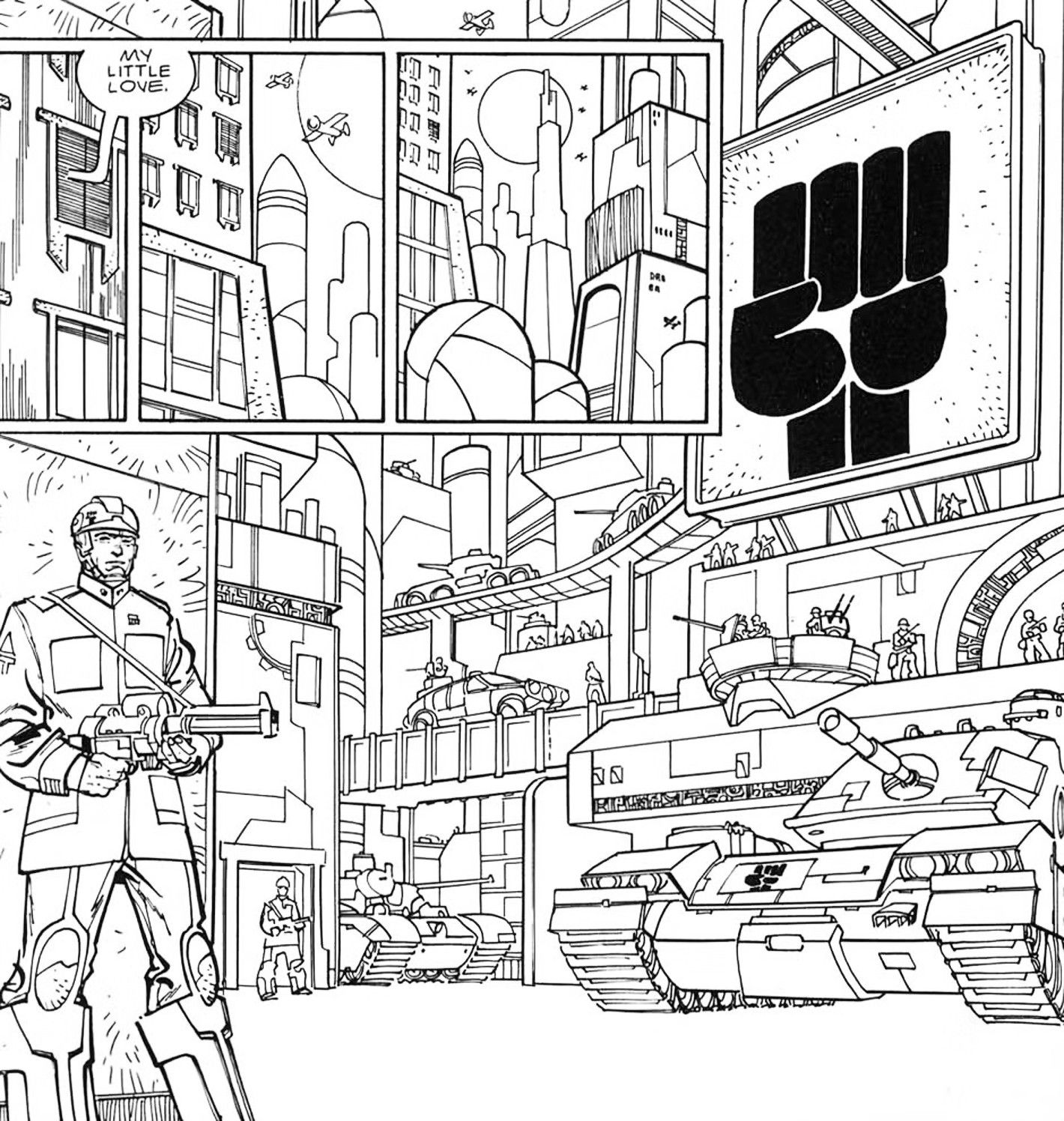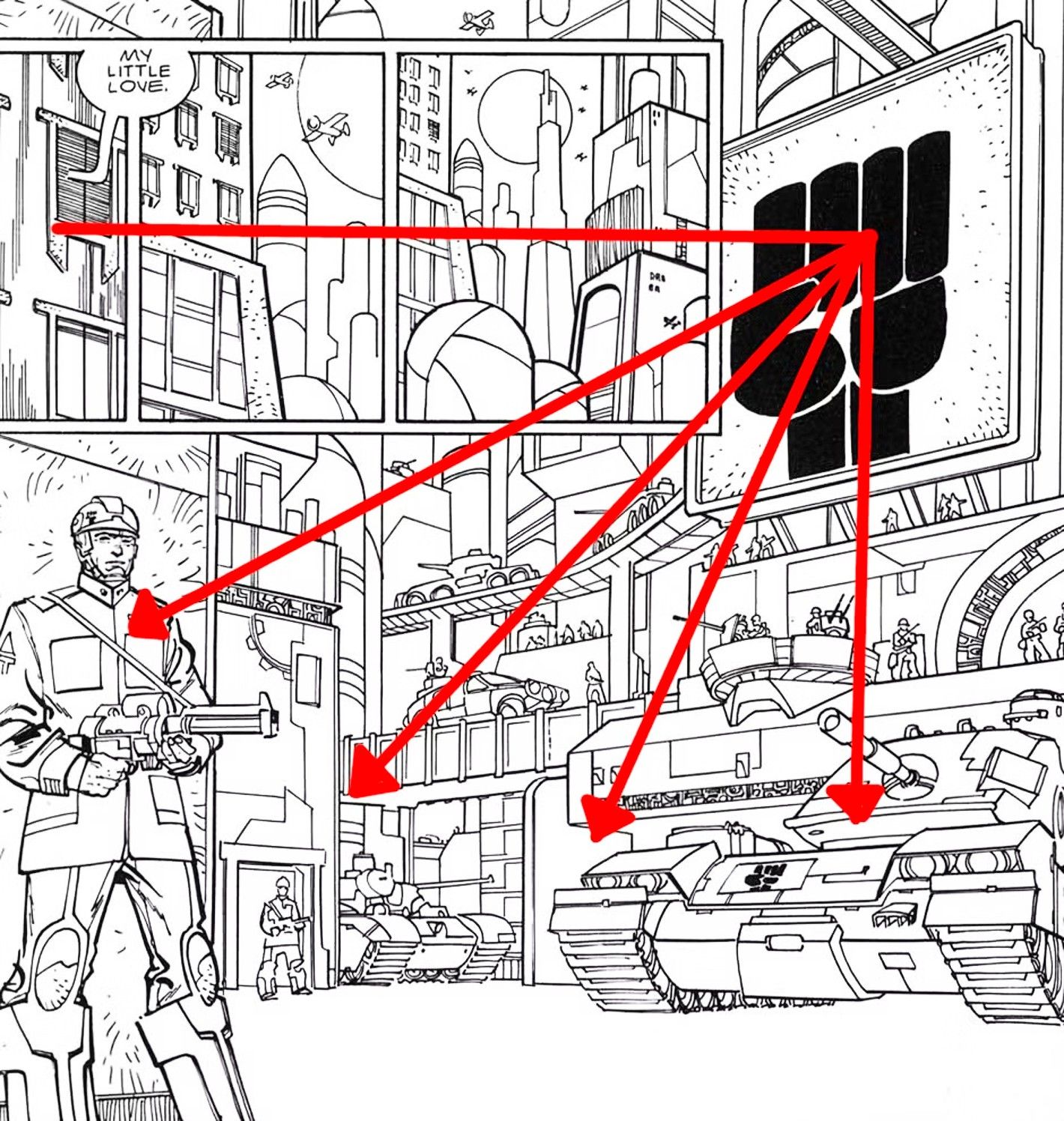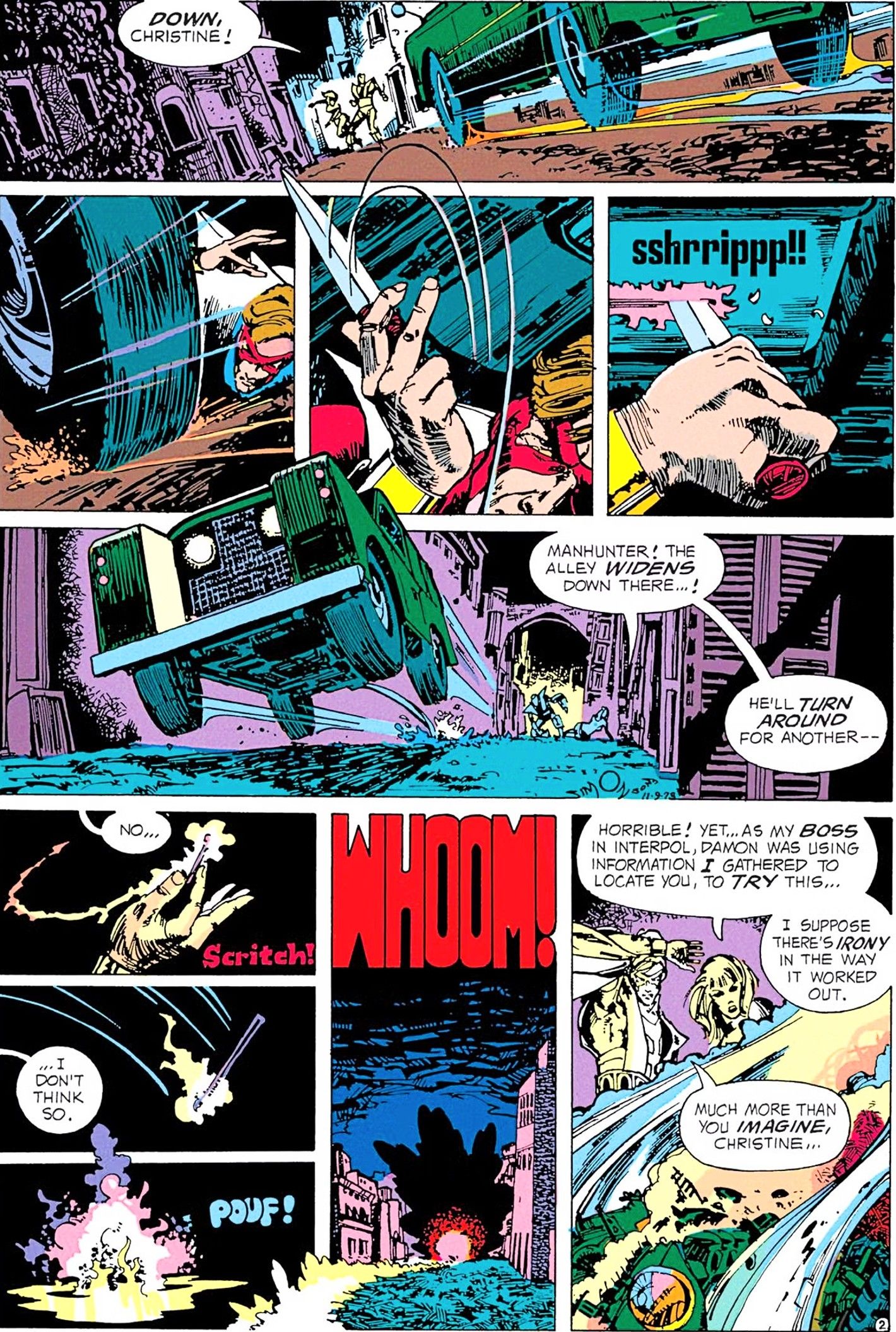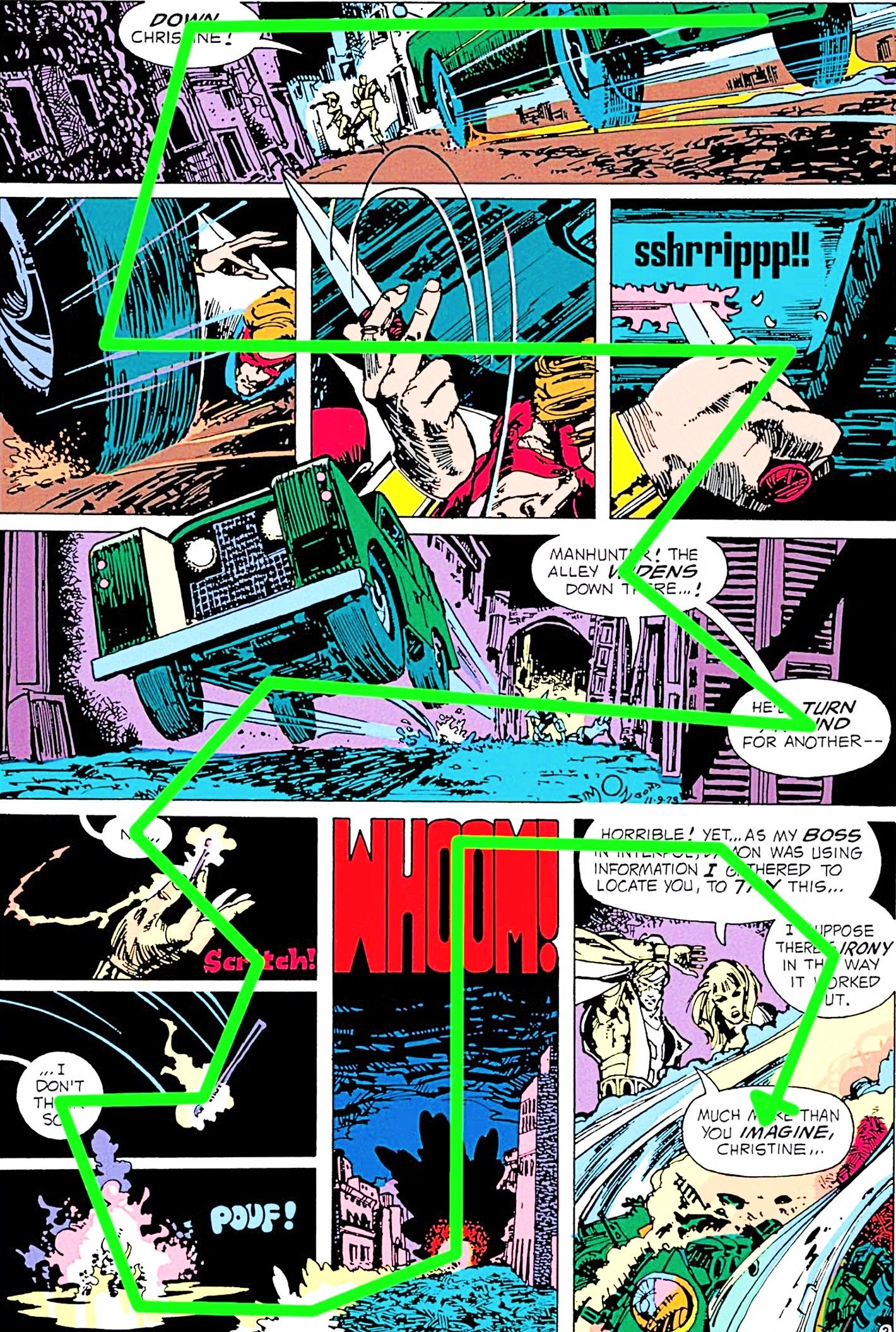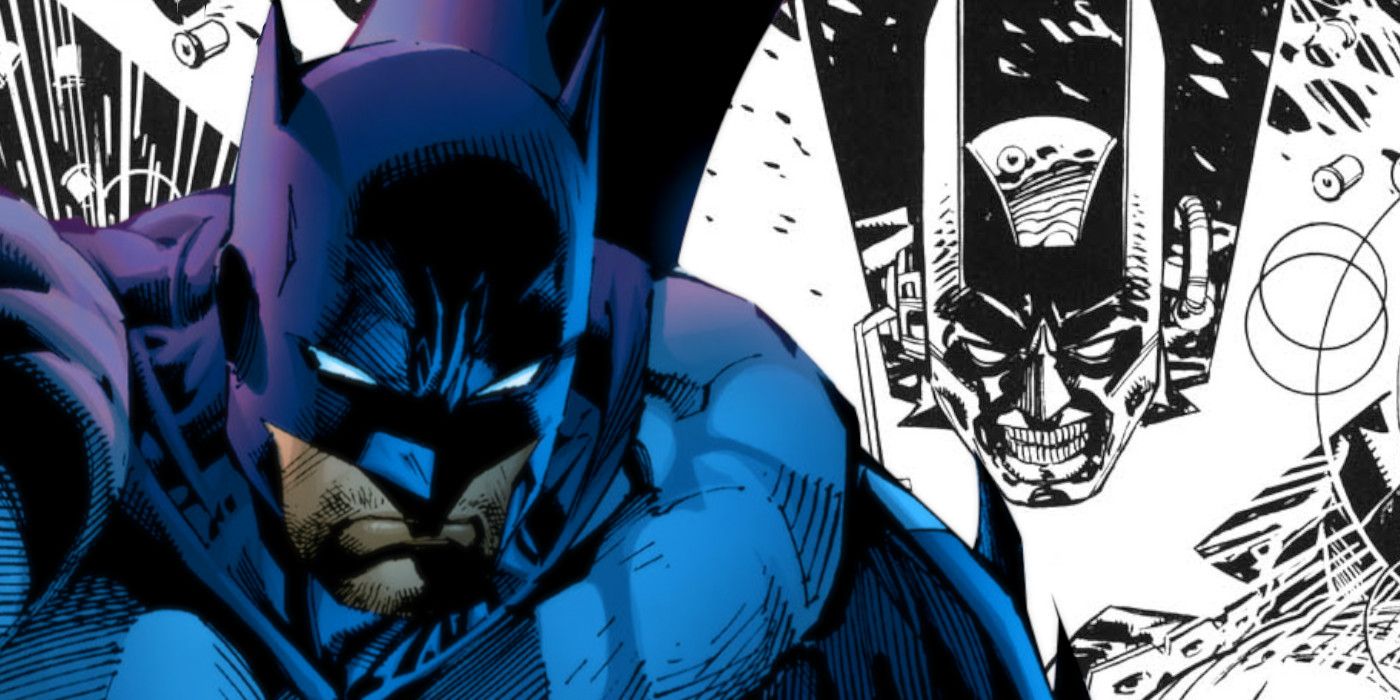
For a long time, my interest in comic books was purely in the characters themselves – until I read one Batman comics in particular, which taught me to understand how comics function as an art form, and how to recognize the almost invisible ways in which comic creators move the reader's eyes across the page.
My education came when I read the first volume of Batman: Black and Whitespecifically the story “Legend” by writer/artist Walter Simonson, which originally appeared in issue #2. The story shows a mother telling her son a bedtime story about Batman, a hero from the past who protected the city.
The story's alternate future setting is a fun romp, but what really surprised me was the final page of Simonson's article. When the woman goes to the window and opines about how she hopes Batman returns someday, she goes to the window, and Simonson shows that Gotham has turned into a fascist hellscape.
I'm amazed at how this single page proves that artist Walt Simonson was a master of comic book art
"Legend", by Batman: black and whiteFinal page
The reveal that Gotham has been turned into a militarized police state is effective, but what really makes the moment work is how Simonson deftly presents the reveal. He starts the page in the top left corner, with a series of three horizontal panels that slowly move away from the woman's window in her building. Instead of a fourth panel to complete the sequence, Simonson places a stylized symbol of a fist – presumably the symbol of Gotham's fascists – which is actually connected to a large image immediately below, representing the militarized police state in full.
Seeing the way Simonson illustrated this moment taught me that comic book storytelling depends on how the the artist controls where the reader's gaze goes. Simonson's technique in Batman: Black and White the page begins with a clear series of panels from left to right, deftly leading the reader across the top of the page before taking them to the first symbol, which then opens the page to the large image below, of the police force controlling Gotham. The visual storytelling is clear and precise, and there is never any confusion about where the reader's eye should go next.
Learning how comic artists can move the reader's gaze from one panel to another was akin to learning the secret to a magic trick.
The final page of Walt Simonson's book Batman: Black and White The story hit me like a brick wall, as now I truly understood how comic book storytelling works. Much like Keanu Reeves in The MatrixNow I could see the “code” hidden beneath the comic page. Learning how comic artists can move the reader's gaze from one panel to another was akin to learning the secret to a magic trick, as I was unaware of the sleight of hand used that guided my virtually invisible reading.
Walt Simonson's "Manhunter" Is Another Masterclass in Comic Book Storytelling
Detective comics #437-443, Serialized Backup History
To better illustrate the creative ways in which comic book creators control the reader's gaze, let's take a look at another page from a Walt Simonson classic: Hunterone of Simonson's first efforts, in collaboration with writer Archie Goodwin. Originally functioning as a back-up story in Detective comics #437-443, Hunter revived Golden Age hero Paul Kirk, who was revived by an international criminal organization known as the Council. The Council trains Manhunter, giving him a healing factor and cloning him into an army of highly trained assassins. Rebelling against his new master, Manhunter escapes and wages a one-man war against the Council.
The page we are looking at comes from the fourth chapter of the Hunter backups, which first appeared in Detective comics #440. The story begins with Manhunter and Interpol agent Christine St. Clair being attacked by Damon Nostrand, Christine's superior at Interpol, who is revealed to be a double agent for the Council. Manhunter deftly handles the attack by cutting off Nostrand's gas tank while dodging the oncoming vehicle, then finishes off the corrupt Interpol agent by lighting a match and throwing it into the trail of gasoline left by Nostrand's car.
Hunter has been acclaimed by comic book fans throughout history for its unique approach to storytelling utilizing hyper-condensed layouts with multiple panels per page. The page above contains ten panels, each depicting a specific action, as Manhunter deals with Nostrand's attack, offering one masterclass on how Simonson uses panel positioning and directional devices to control the reader's eye. For example, how the match lighting the gasoline in the eighth panel leads to the car exploding in the ninth. Lyricist Alan Kupperberg enhances Simonson's layouts with his expert placement of word balloons and sound effects, leaving no doubt as to where the reader should look next.
I want more people to understand why Walt Simonson is one of the greatest storytellers in comic book history
Sharing the legacy of the legendary creator
For me, reading that original Batman: Black and White history opened my eyes to a whole new world of appreciation for comics and the artists who create them. I went from a passive reader to an active reader – no longer satisfied with simply sitting and reading comics as a way to kill time, but rather interacting with them in a more analytical way. Of course, there's nothing wrong with reading comics just for their entertainment value, but I'm grateful that artists like Walt Simonson showed me how to enjoy the adventures of Batman and others at various levels.
